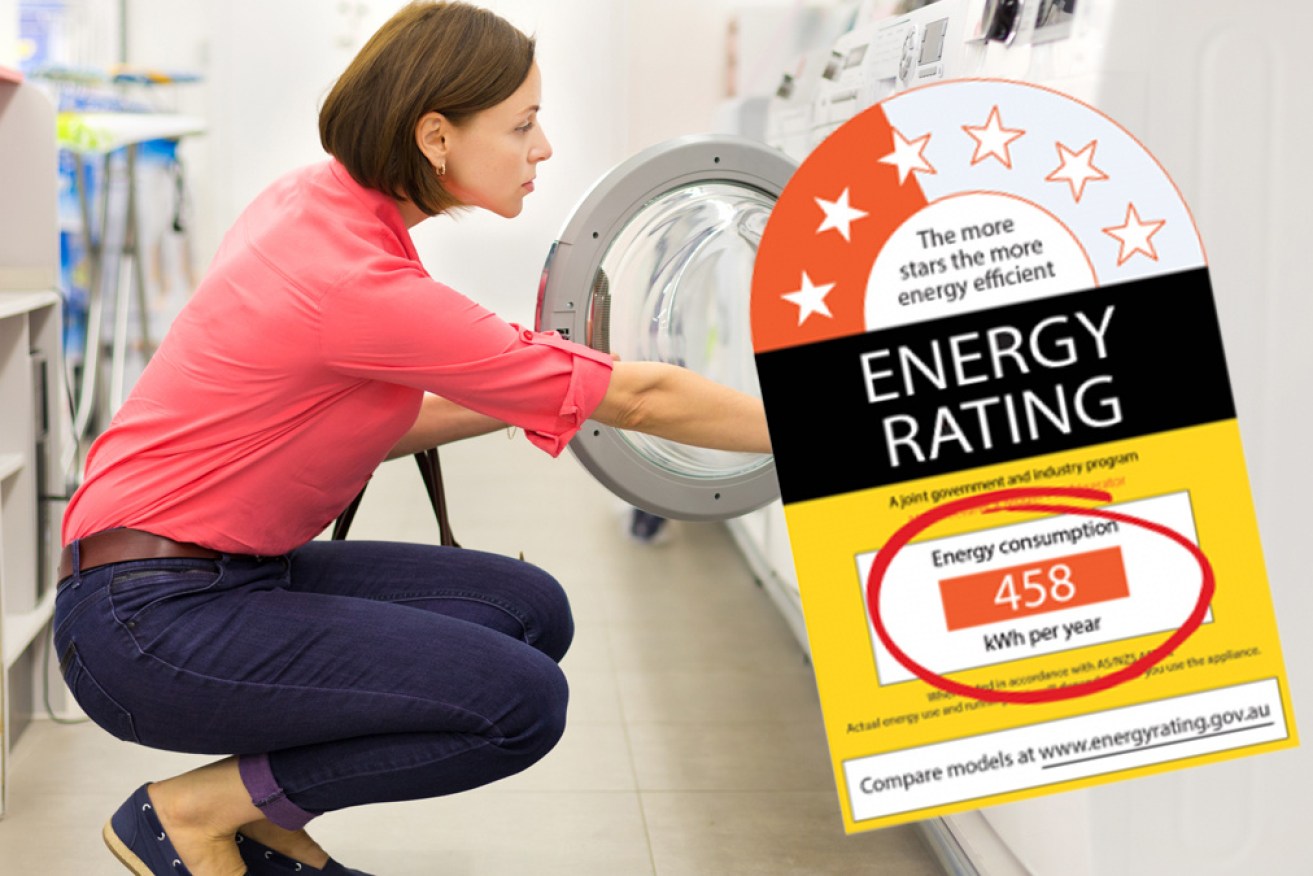Buyer beware: Experts warn product labels are misleading


Product labelling can be confusing and misleading, industry insiders warn. Photo: Getty/TND
Labels on products in Australia claim to inform consumers of anything from efficiency ratings to country of origin, but they’re often misleading, confusing or wrong.
That’s the warning from consumer experts, who are imploring buyers to beware and do their research before they spend – especially if it’s a big purchase.
The advice comes as independent lab tests by consumer group Choice uncovered a $1899 top loader Samsung washing machine, which was awarded four stars for efficiency, actually used 214 litres of water on a default wash.
(The average top load washer uses about 120 litres, while a front loader should use 70 litres.)
Michael Callaghan, lecturer in marketing at Deakin Business School, said Australia had “gone backwards as a nation in terms of how we label things”.
“Some of these ratings come from the manufacturer so you shouldn’t really trust them. Some come from endorsing agencies, which accept fees,” Dr Callaghan told The New Daily.
“The only time I would be trusting them is with safety and health issues.
“For instance, packaging that declares it doesn’t contain nuts. There are huge legal ramifications if it does contains them.”
Pointing to the Volkswagen emissions scandal, when the car company cheated on diesel emissions tests, Professor Callaghan said consumers needed to do their research because even household names can break trust.
“The caveat is: Buyer beware,” he said.
“While it would be good to trust these certifications, emblems and logos, the consumer is probably best advised to do a little bit of homework.”
The Health Star Rating System
It’s not just our appliances and imports – there are also issues with how we label our foods.
The Health Star Rating System started in 2014 as a government initiative to assign health ratings to packaged foods and beverages.
It’s meant to help shoppers understand which foods are more nutritious.
But Gary Sacks, an expert in public health and food policy from Deakin University, said the rating system has serious faults.
“It’s voluntary for companies to put the star system on,” Dr Sacks said.
“Some companies have put it on all their products, which is great because it makes it easy to compare.
“But some companies haven’t chosen to put it on at all, and others have chosen to only put it on the ones that perform well.”
Because of this, consumers don’t get the full picture of the nutritional value of what they are eating, he said.
“Nutrition can get complicated. It’s complex to try and understand the numbers about sugar and salt on the back. The beauty of the health rating system is it simplifies it for people.”
There are growing calls to have it mandated so all our foods are required to display the star rating on their packaging.
Dr Sacks said it would help consumers, especially when products had misleading marketing techniques – like saying food is 100 per cent natural – which aren’t actually correct from a health point of view.
“The health star rating is backed up by science and it can cut through,” he said.
Consumer labels you can trust?
Choice senior campaigns and policy adviser Dean Price said the Samsung washing machine showed the Water Efficiency Labelling and Standards (WELS) scheme needs to be reformed.
The WELS system uses a standard full wash, or 13 kilograms of clothes, to assess the efficiency of a machine.
But most houses only wash about three kilograms of clothes at a time, meaning much less water is required, Mr Price said.
“The change we’ve been calling for is for the testing to reflect how people actually use their washing machine,” he said.
“We want some minimum standards.”
Although the number of water-efficient stars is not always truthful when it comes to washing machines, dishwashers are a different beast.
You can usually trust the water efficiency rating on dishwaters, Mr Price said.
Part of the reason is washing machines have so many options, while dishwashers often just have two.
“It’s about dishwashers being more straightforward. They select one or two cycles – standard or eco,” Mr Price said.
“There’s less fiddling around. Whereas the washing machine can have one hundred different combinations. You can add a rinse or take one away.”
Savvy consumers need to look at how the machine is tested, and cross check the manual, to see how much water is used on the wash they like.
“You really need to look at that detail so you can assess if it’s what you would be doing at home,” Mr Price said.








